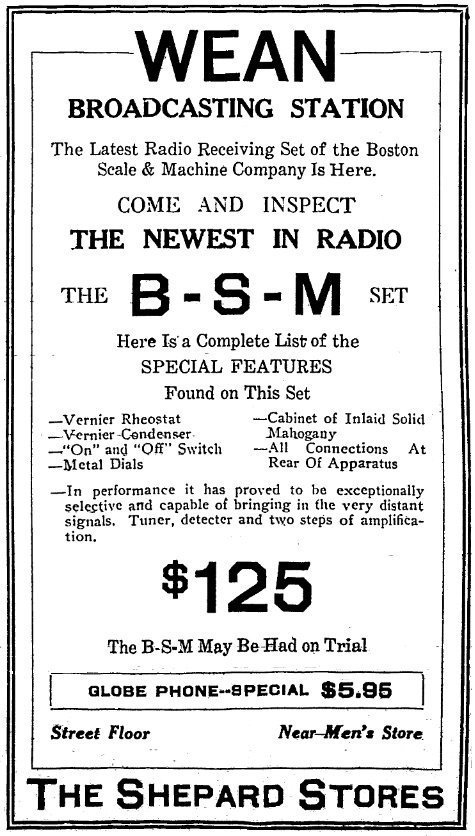
Pawtucket Times October 21, 1922
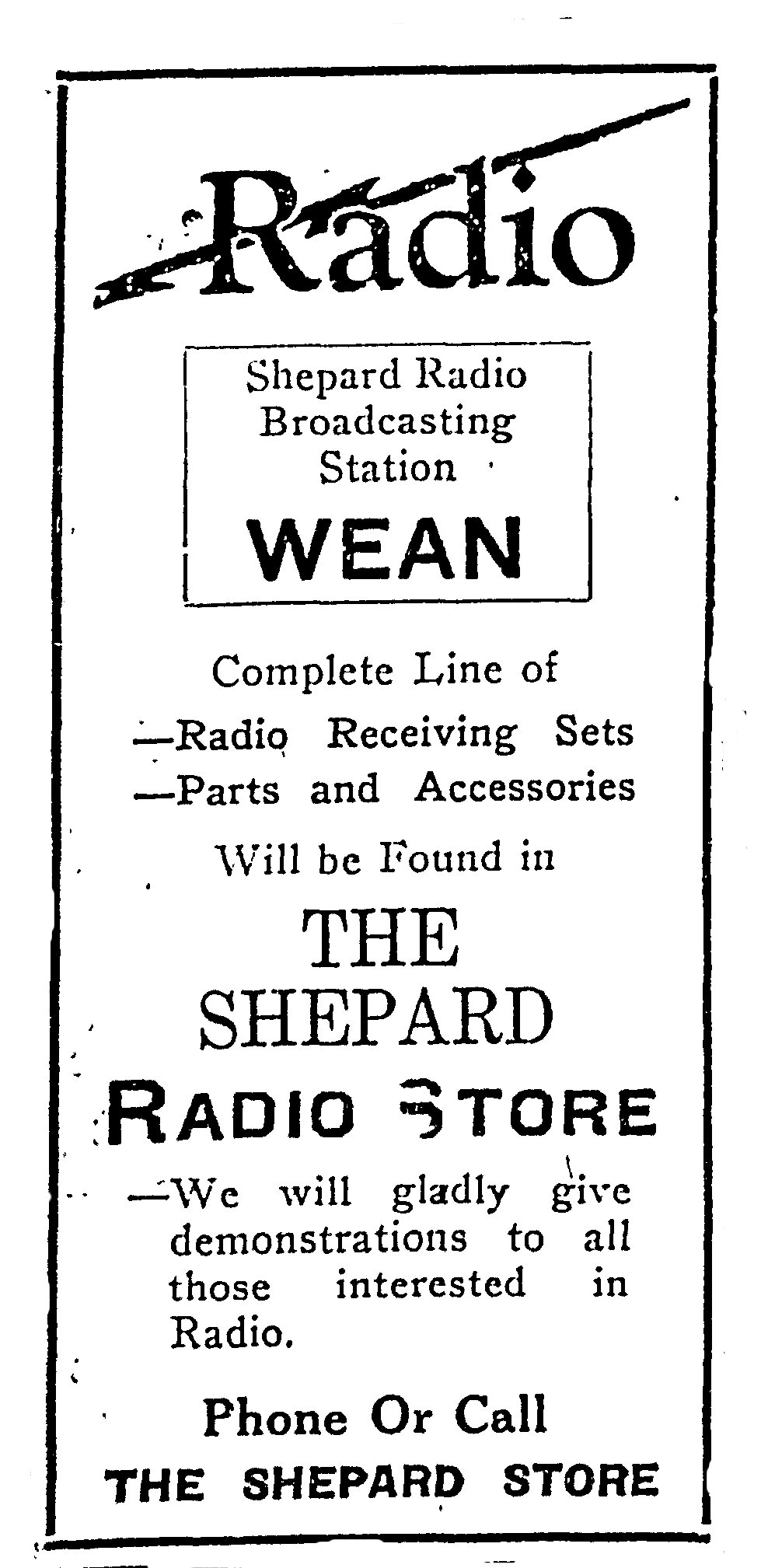
Click to enlarge
Providence Journal
November 5, 1922
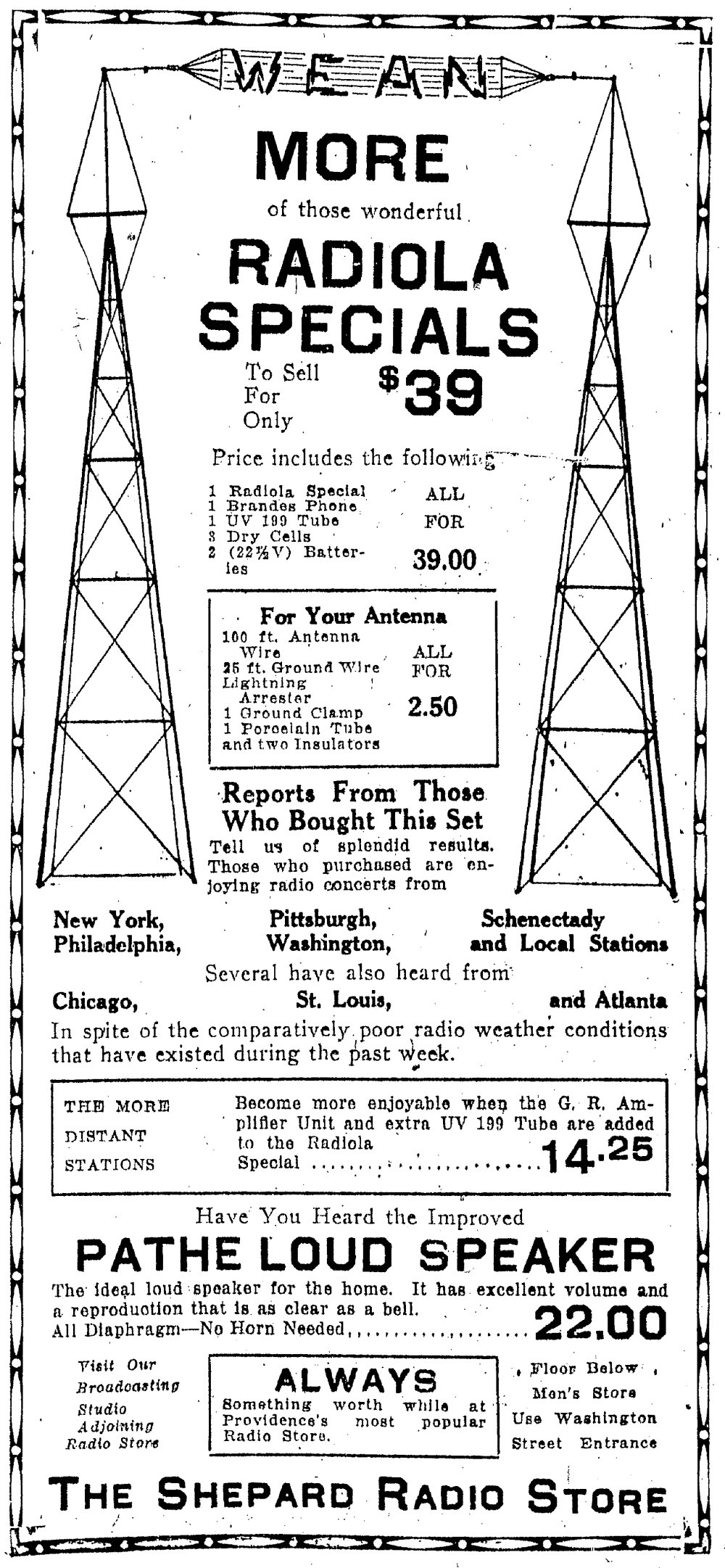
Click to enlarge
Providence Journal October 7 1923
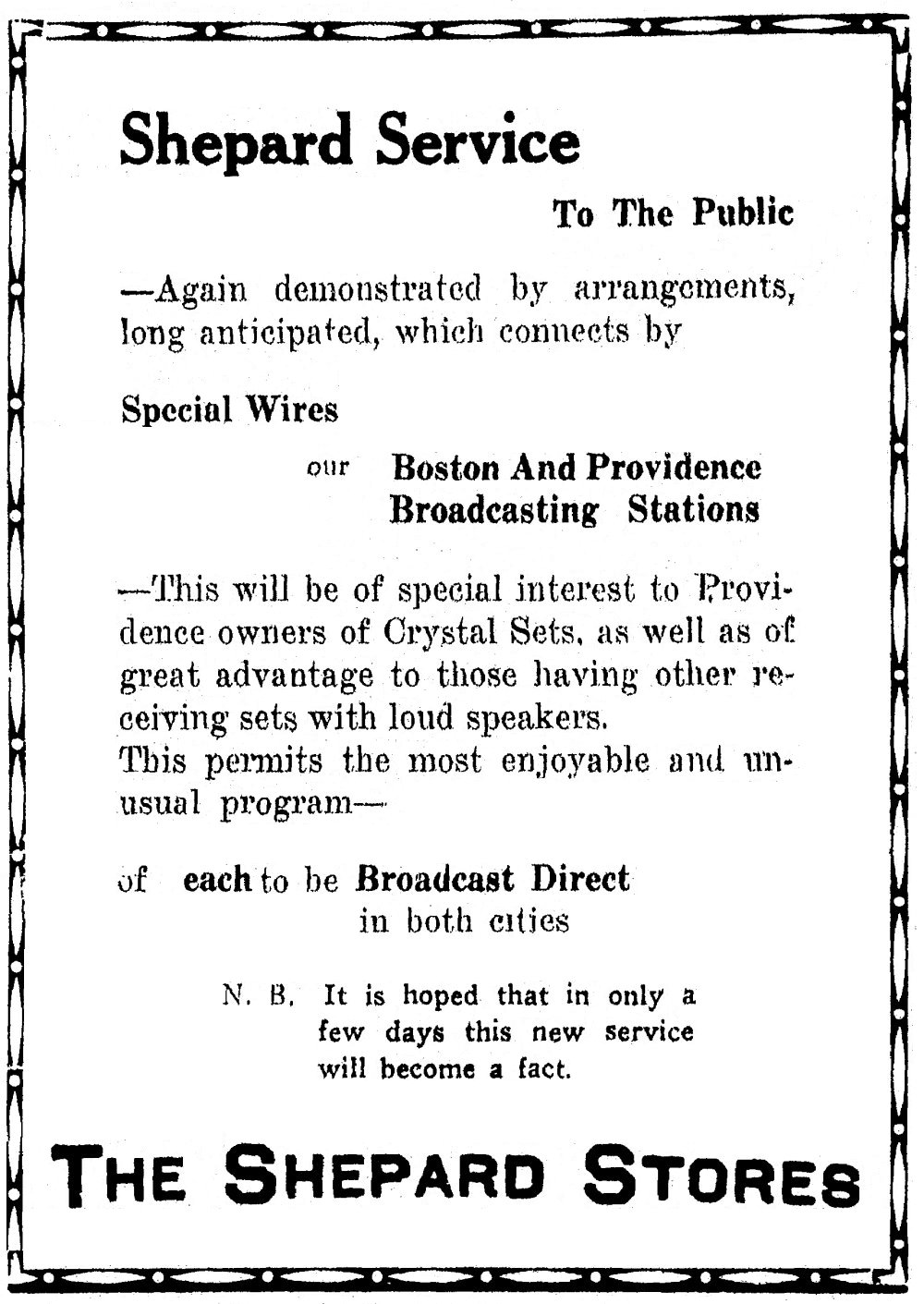
Click to enlarge
Providence Journal
October 21, 1923
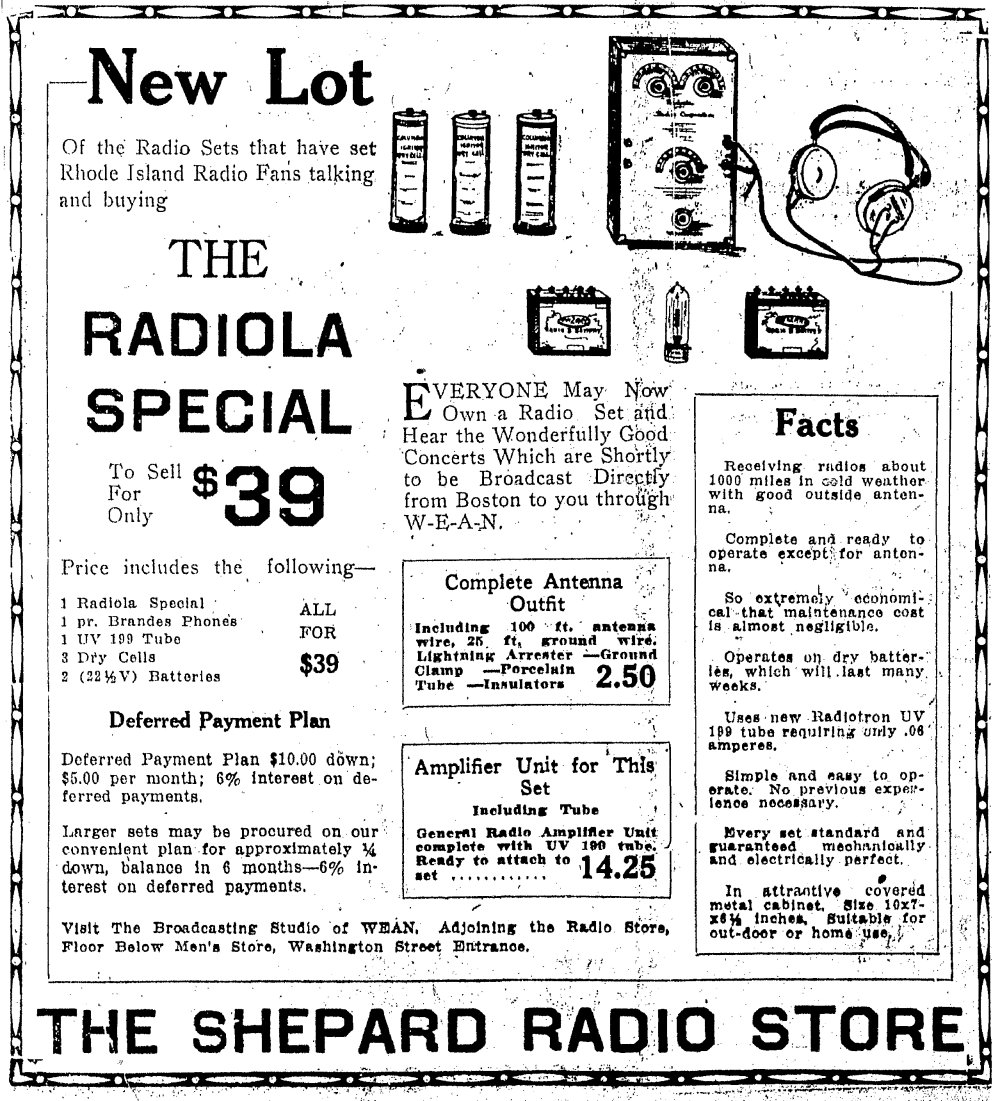
Click to enlarge
Providence Journal
October 28, 1923
1923 Yale Harvard Foorball Game

Click to enlargeProvidence Journal November 24, 1923
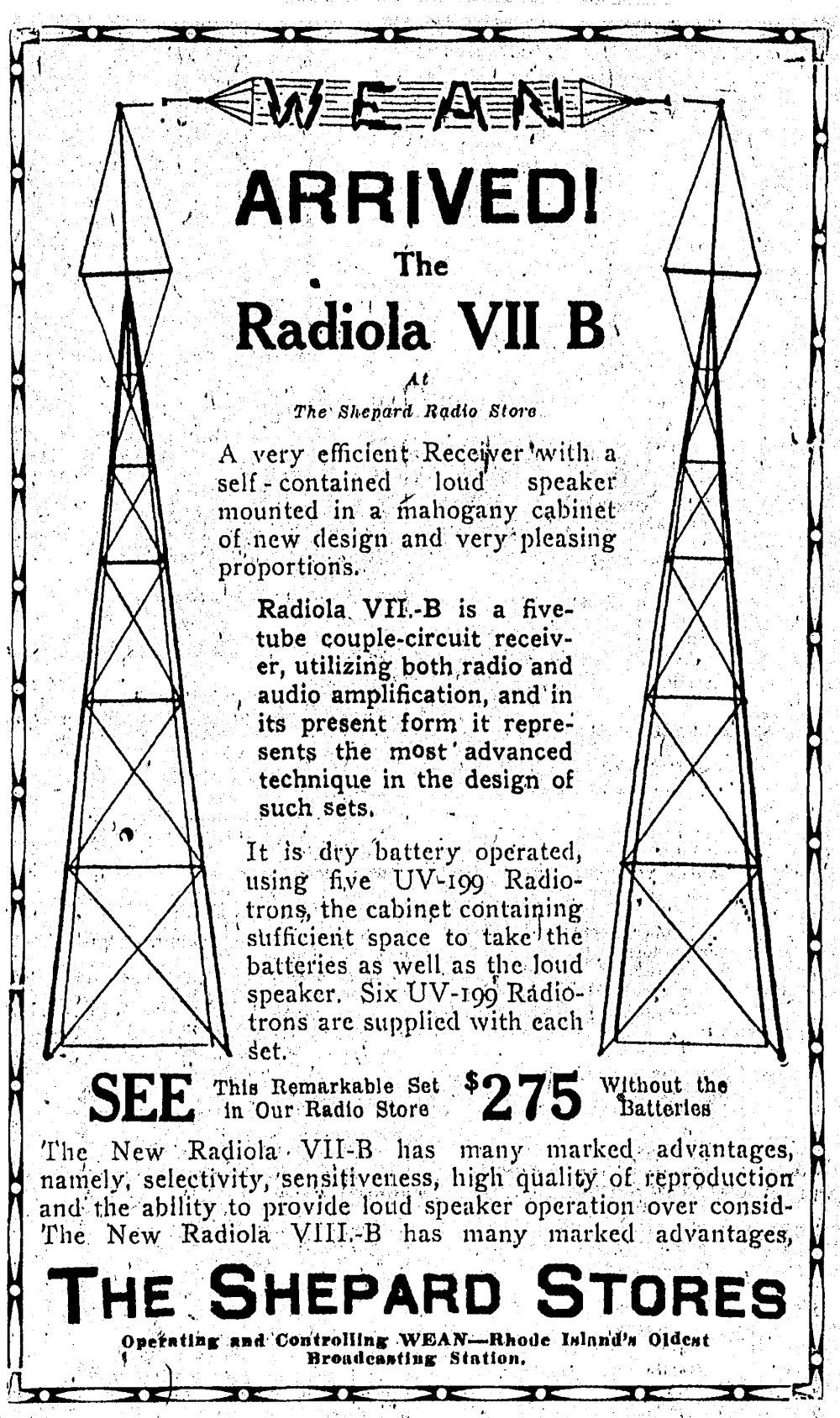
Click to enlarge
Providence Journal
February 3, 1924
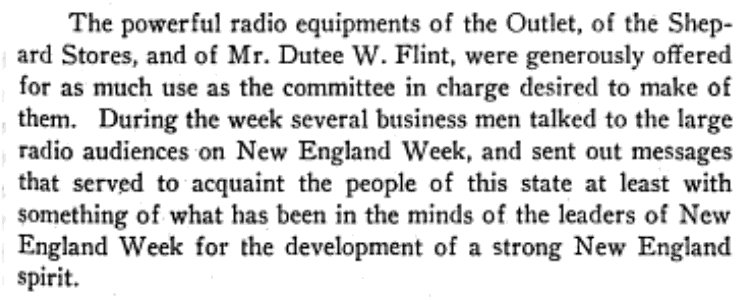
Providence Magazine Volume35 March 1924

Click to enlarge
Providence Journal February 10, 1924

Click to enlarge
Providence Journal March 9, 1924

Click to enlarge
Providence Journal
May 9, 1924

Click to enlarge
Providence Journal
November 16, 1924

Click to enlarge
Providence Journal 1925
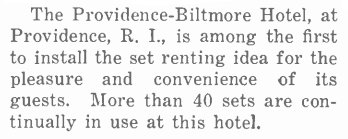
Radio Retailing February 1925
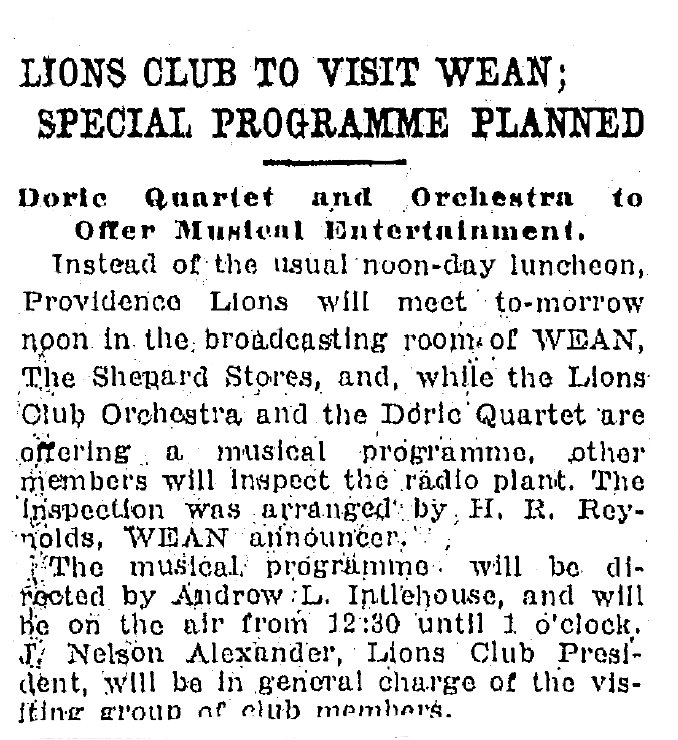
Providence Journal
March 4, 1925

Click to enlarge
Providence Journal
April 26th, 1925
In August of 1925, the WEAN radio station was completely desroyed by fire. WEAN then went to a reduced program schedule relayed from other locations.
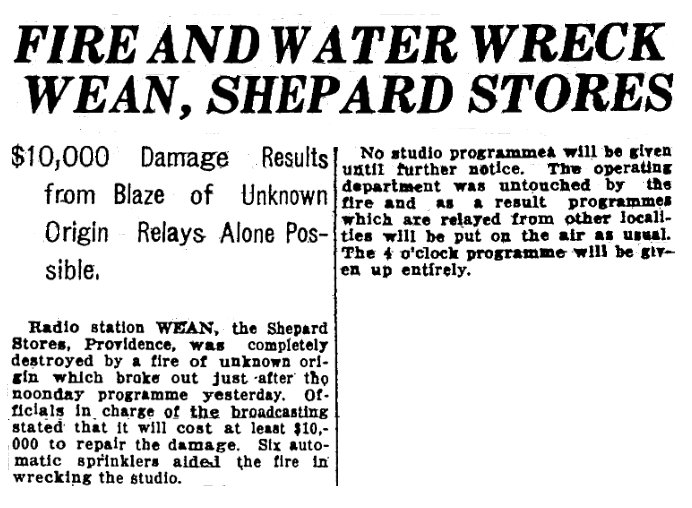
Pawtucket Times August 13, 1925
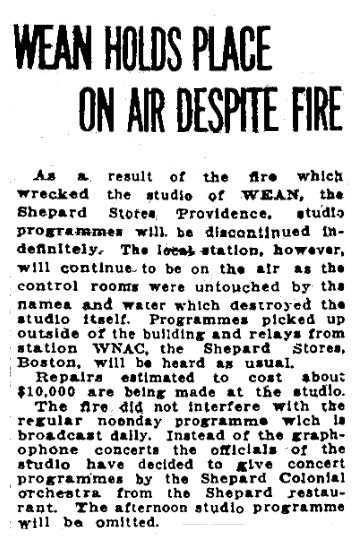
Pawtucket Times August 14, 1925

Click to enlarge
Providence Journal
October 4, 1925
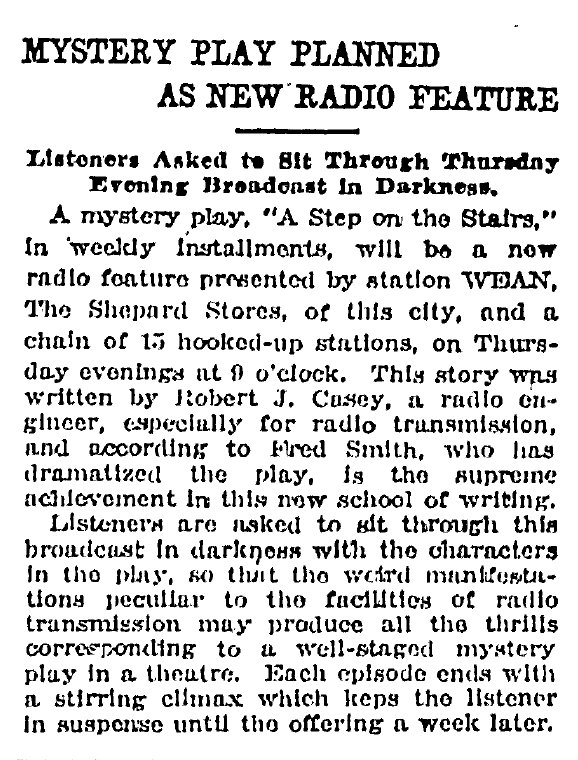
Providence Journal
February 23, 1926
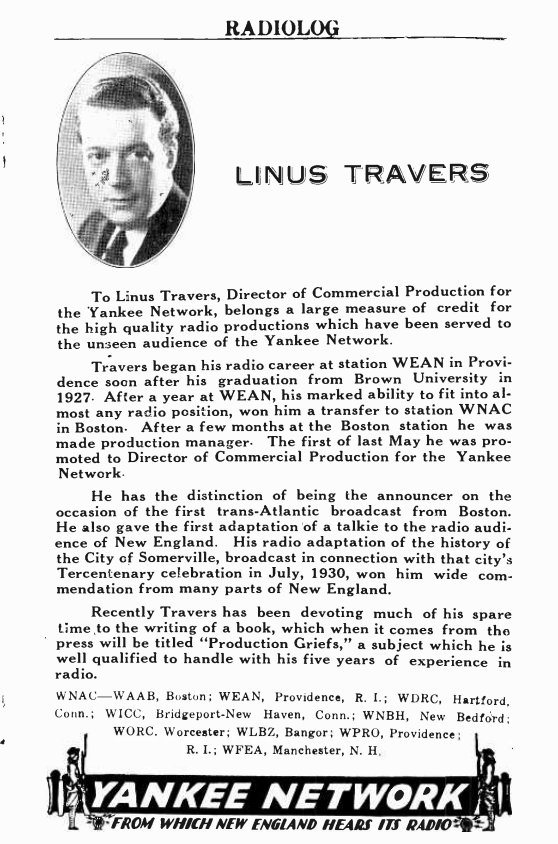
Radio Log June, 1926
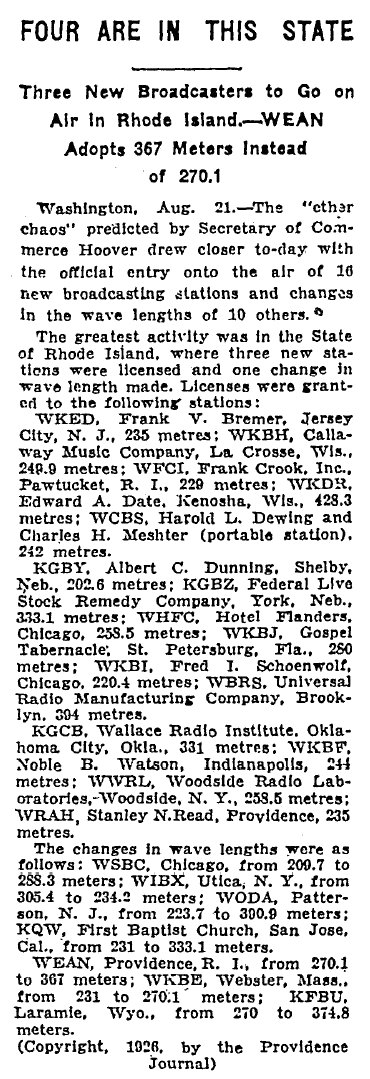
Providence Journal
August 23 1926
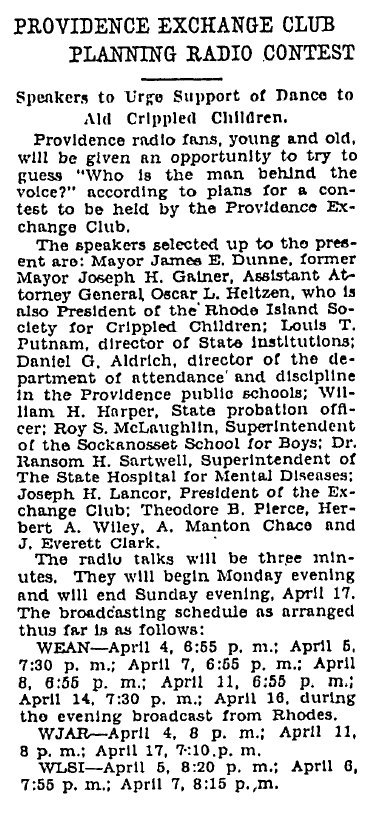
Providence Journal
April 1, 1927

Pawtucket Times October 17, 1927
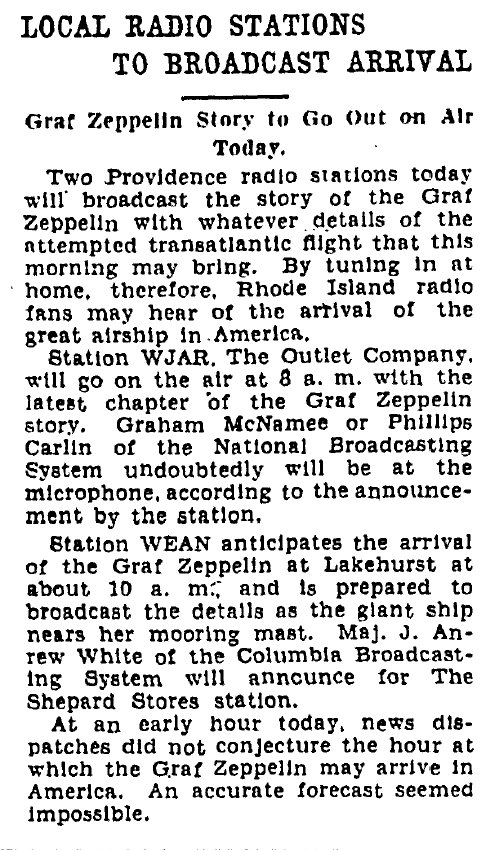
Providence Journal
October 14, 1928

Click to enlarge
Providence Journal
October 18, 1925
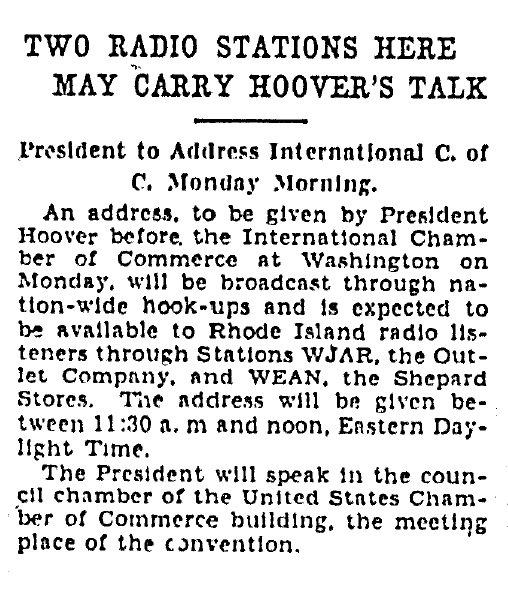
Provicence Journal May 2, 1931
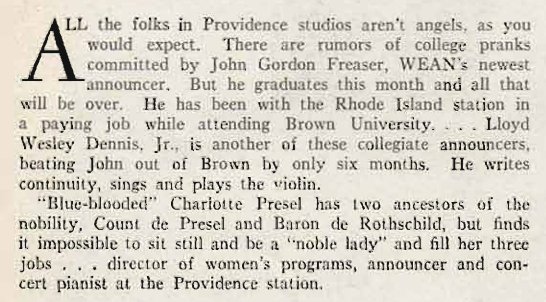
Radio Digest July, 1931
|

